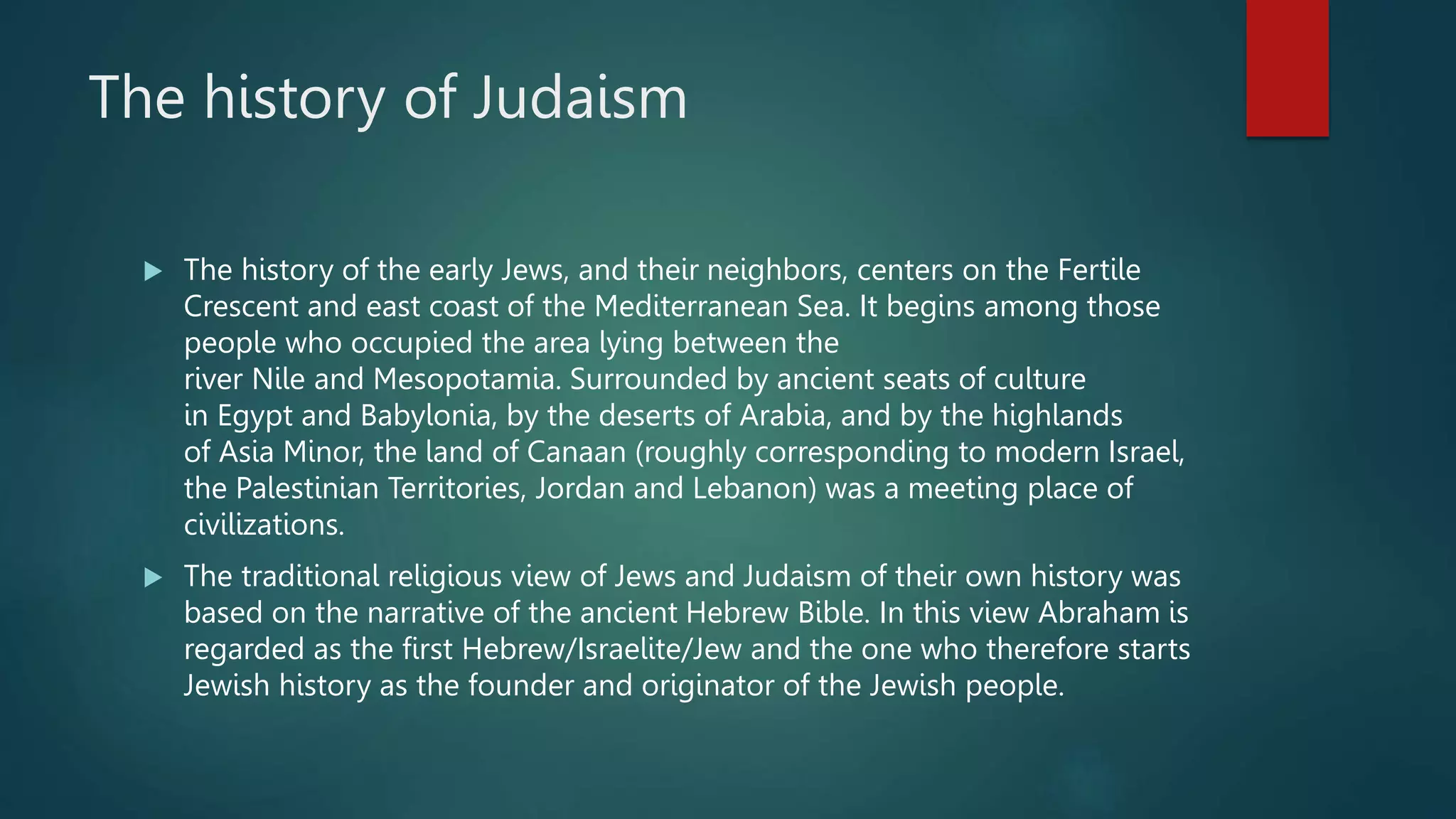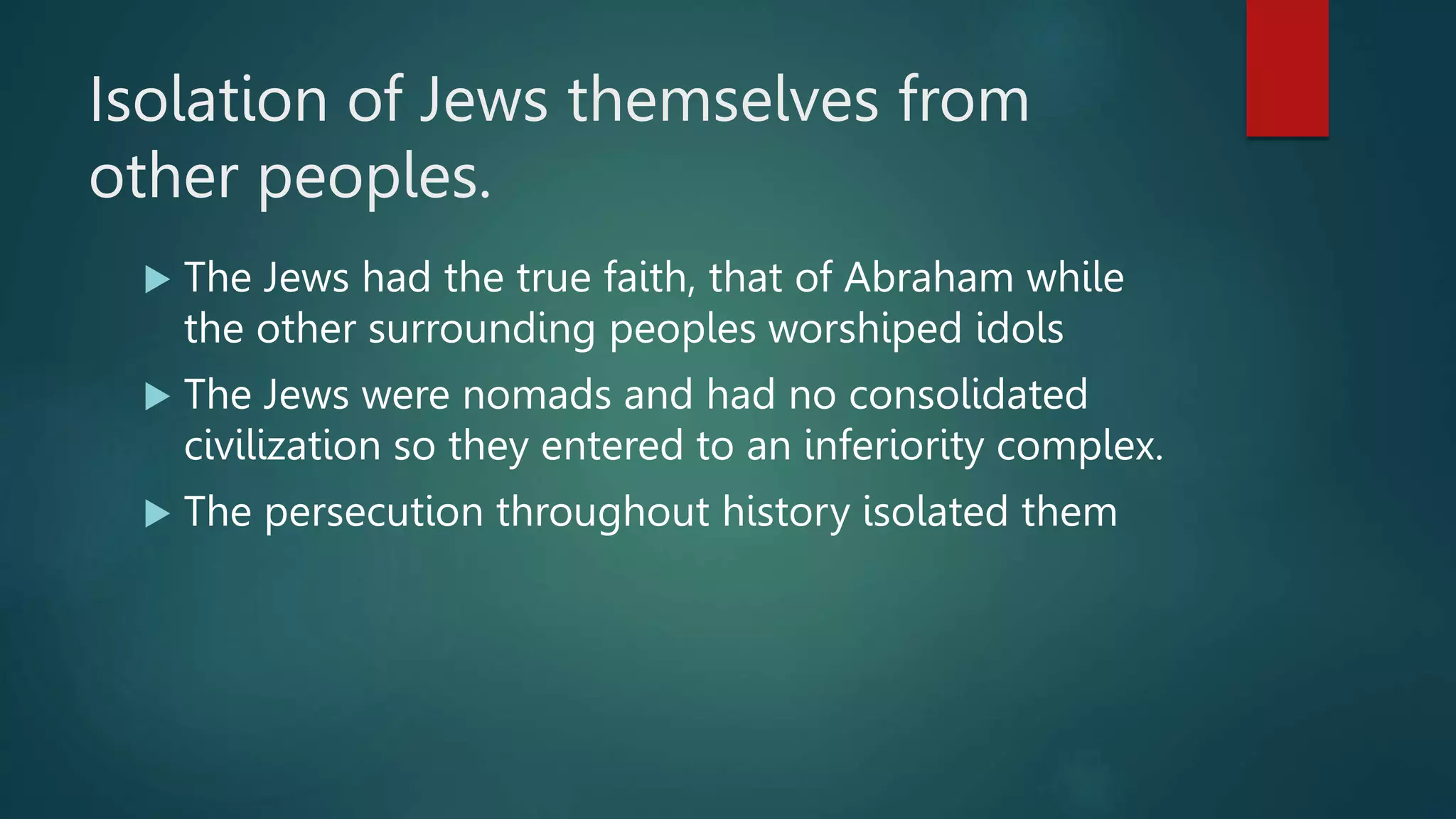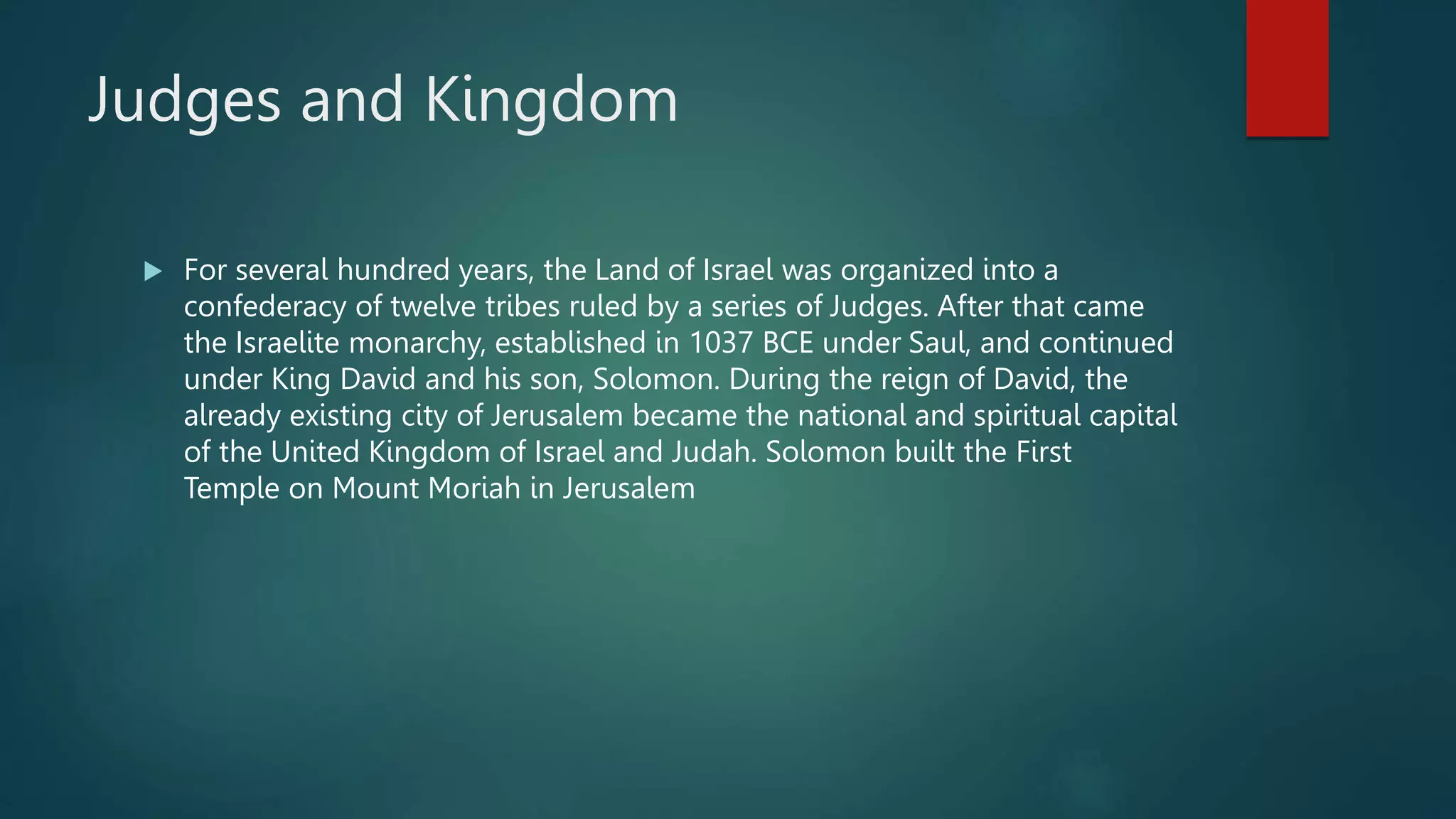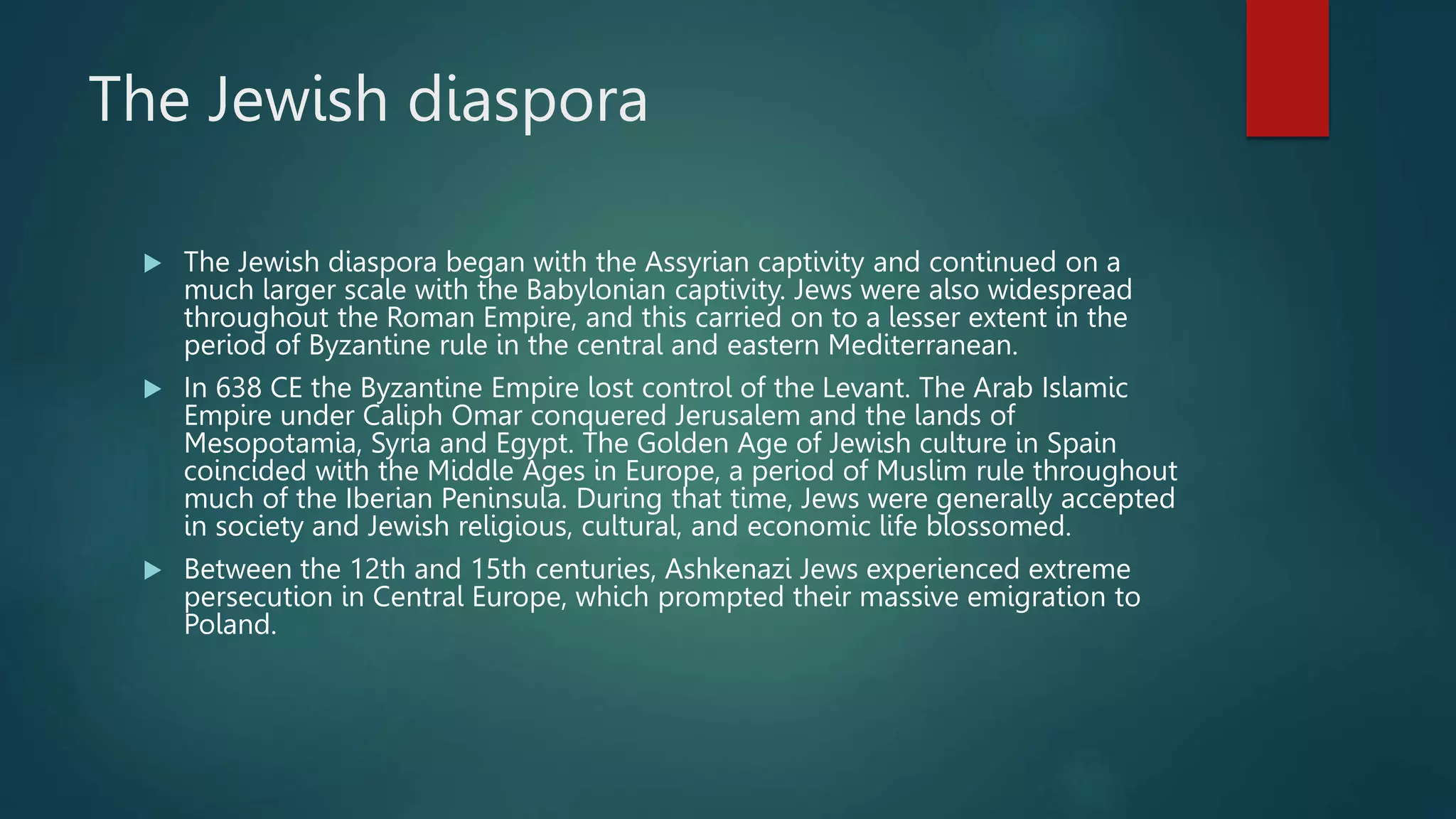The history of Judaism began with Abraham around 1800 BCE. Abraham was considered the first Hebrew and the founder of Judaism. His descendants Isaac and Jacob, who took the name Israel, were also important figures. Moses then led the Israelites out of slavery in Egypt around 1300 BCE and received the Ten Commandments from God. After periods of rule under judges and kings, the kingdom split and the Israelites were exiled to Babylon in 587 BCE before returning and rebuilding the temple.





![The history of Genesis
The origins of Judaism date back more than 3500 years. This religion is
rooted in the ancient near eastern region of Canaan (which today
constitutes Israel and the Palestinian territories). Judaism emerged from
the beliefs and practices of the people known as “Israel”
God creates a world which is good and fit for mankind, but when man
corrupts it with sin God decides to destroy his creation, sparing only the
righteous Noah and his family to re-establish the relationship between
man and God. Genesis[6]
The ancestral history (chapters 12–50) tells of the prehistory of Israel,
God's chosen people.[7] At God's command, Noah's
descendant Abraham journeys from his birthplace into the God-given land
of Canaan, where he dwells as a sojourner, as does his son Isaac and his
grandson Jacob](https://image.slidesharecdn.com/historyofjudaism-230528190242-097481a7/75/History-of-Judaism-pptx-6-2048.jpg)
![…
. Jacob's name is changed to "Israel", and through the agency of his
son Joseph, the children of Israel descend into Egypt, 70 people in all with
their households and God promises them a future of greatness. Genesis
ends with Israel in Egypt, ready for the coming of Moses and the Exodus.
The narrative is punctuated by a series of covenants with God, successively
narrowing in scope from all mankind (the covenant with Noah) to a special
relationship with one people alone (Abraham and his descendants through
Isaac and Jacob).[8]
In Judaism, the theological importance of Genesis centres on the
covenants linking God to his chosen people and the people to
the Promised Land.](https://image.slidesharecdn.com/historyofjudaism-230528190242-097481a7/75/History-of-Judaism-pptx-7-2048.jpg)














